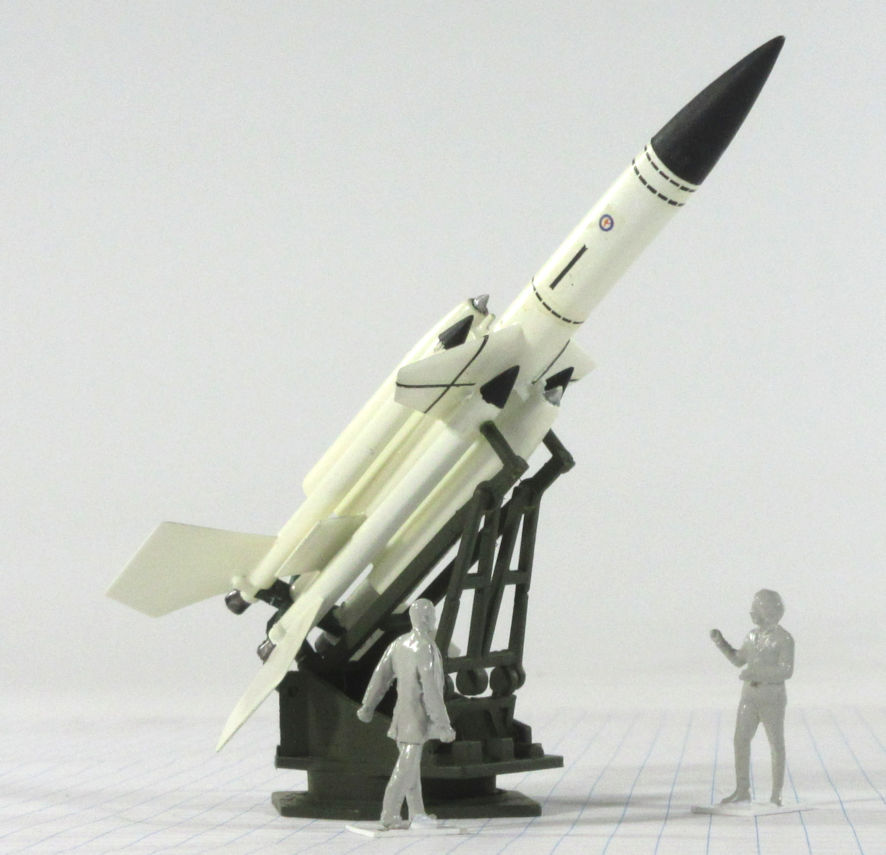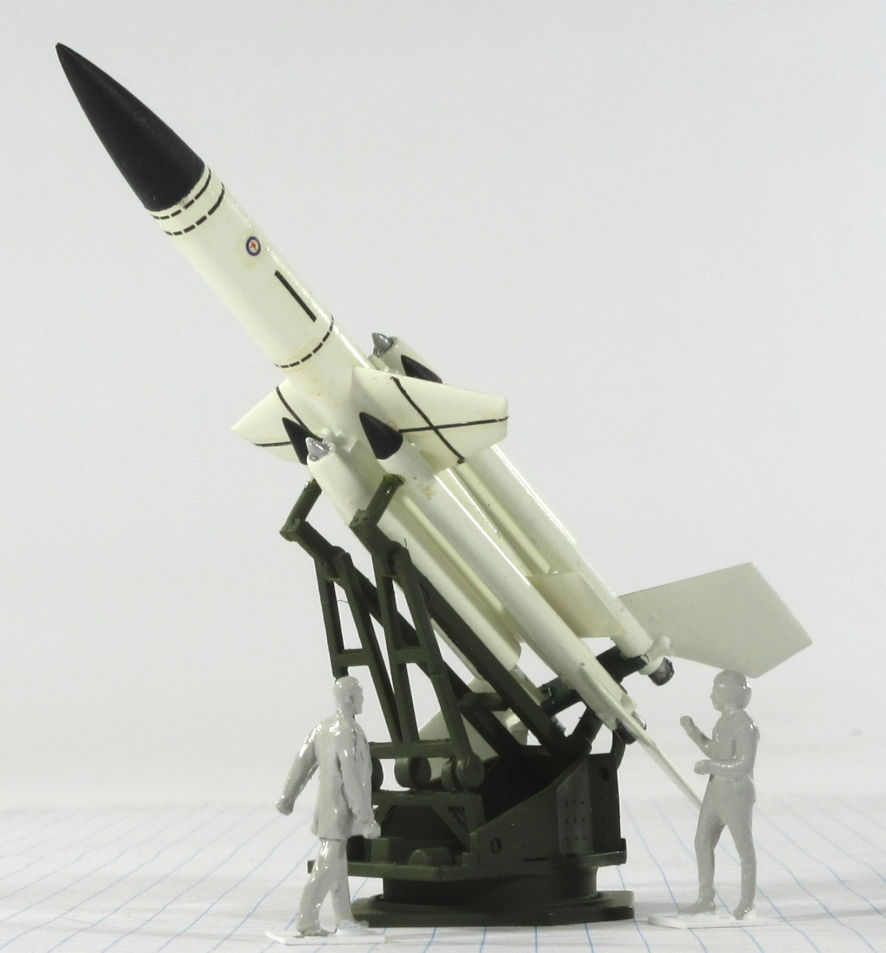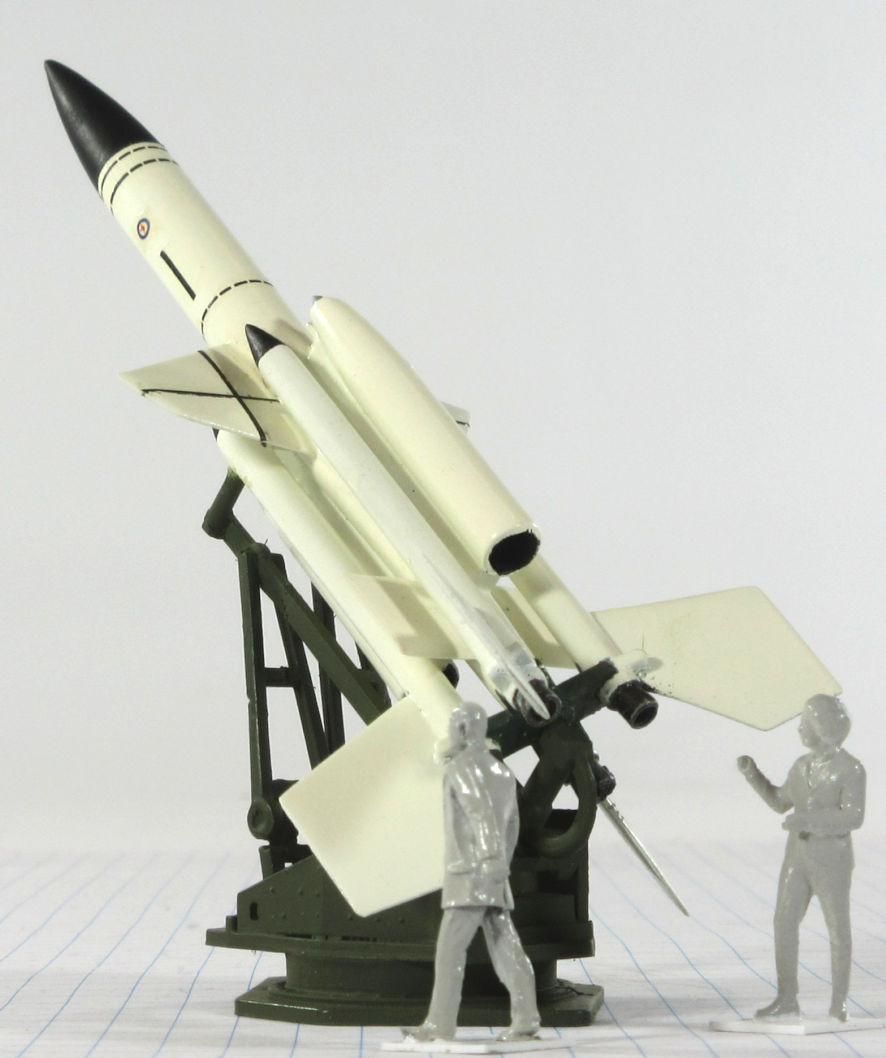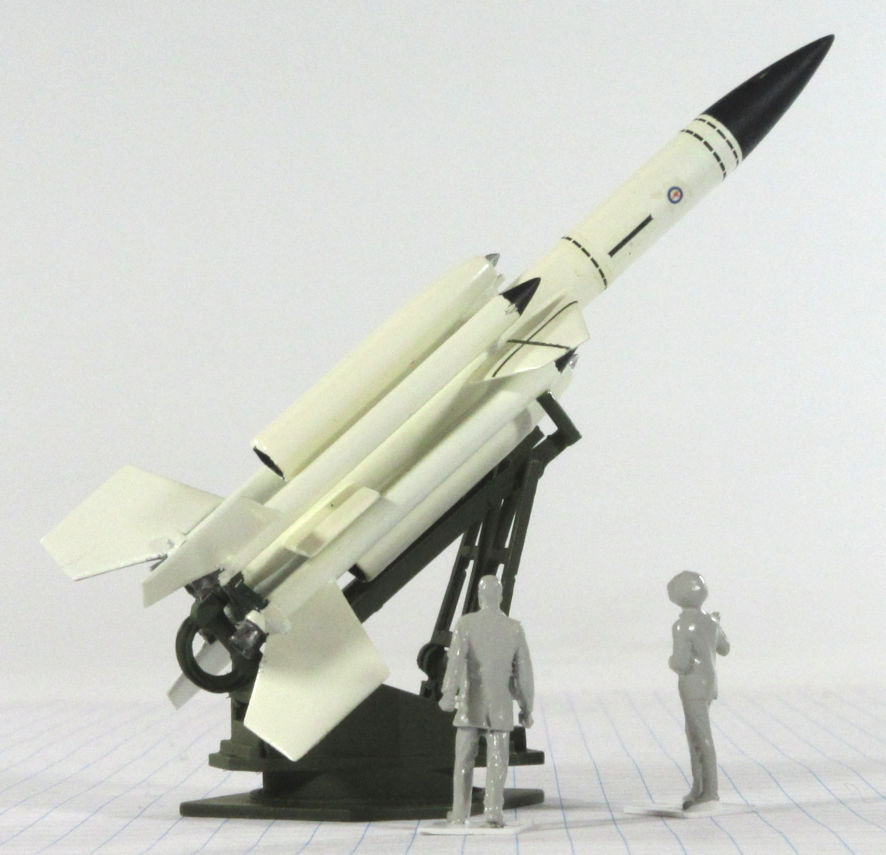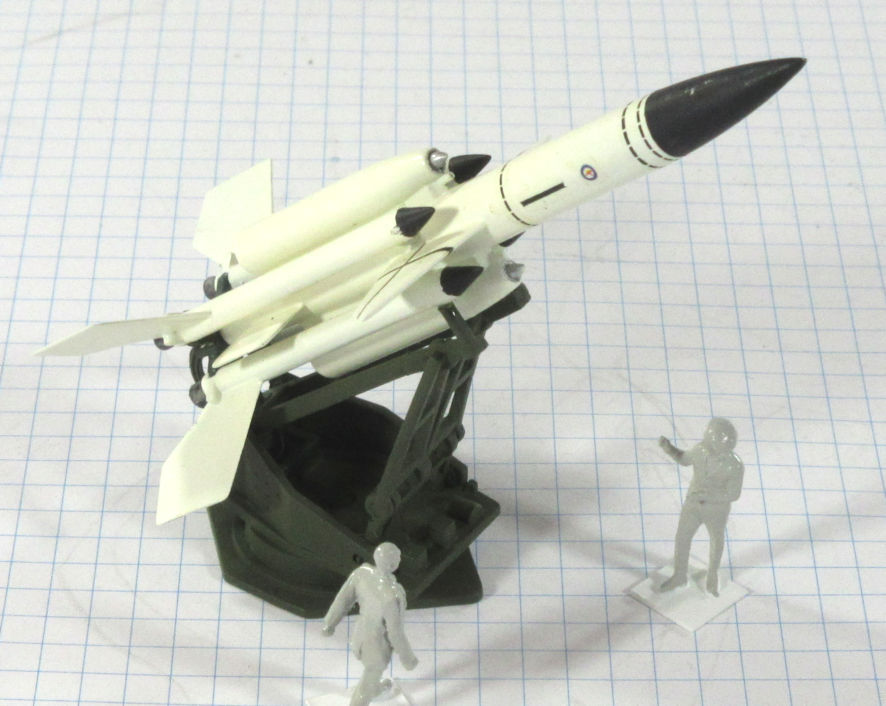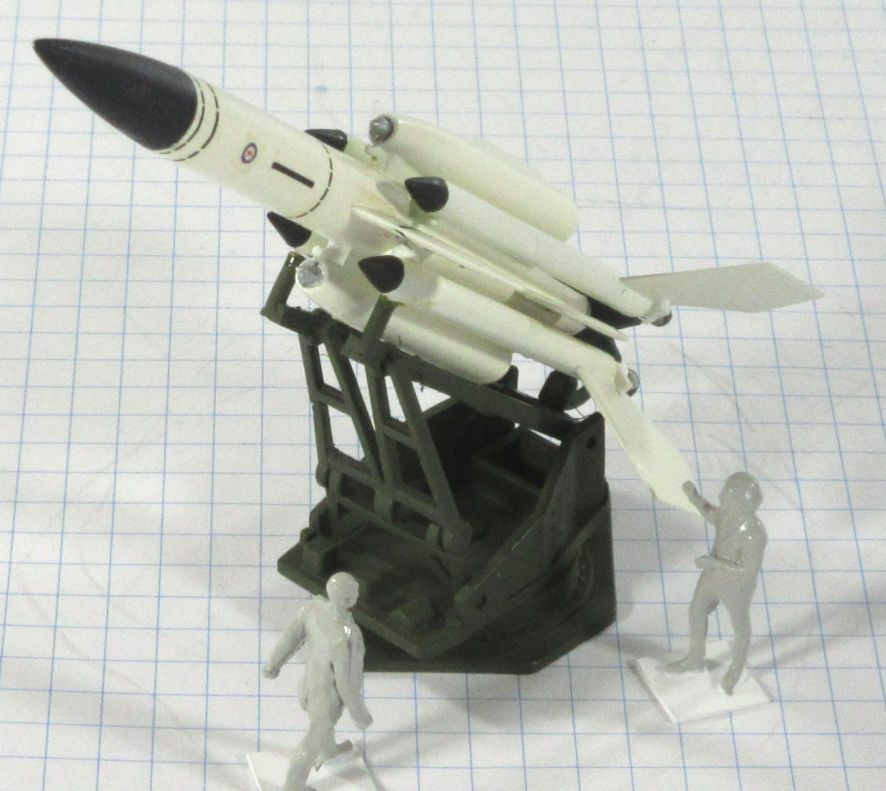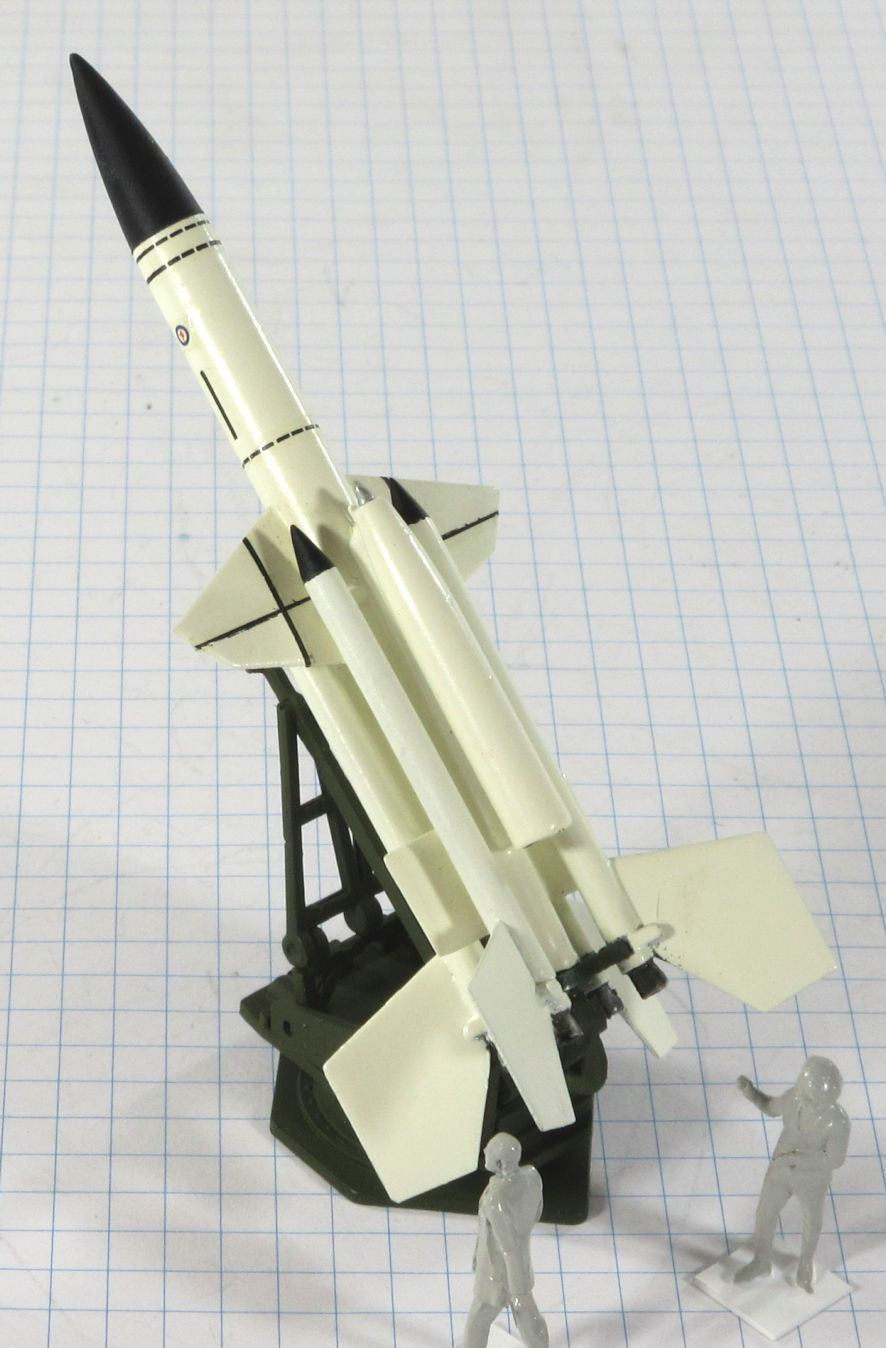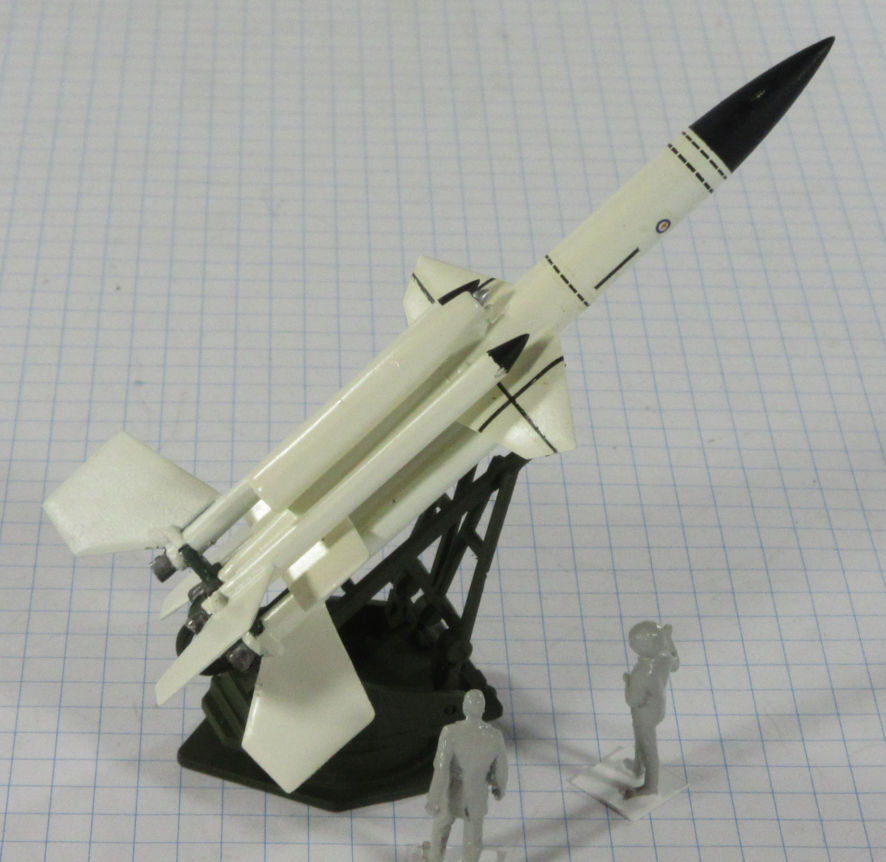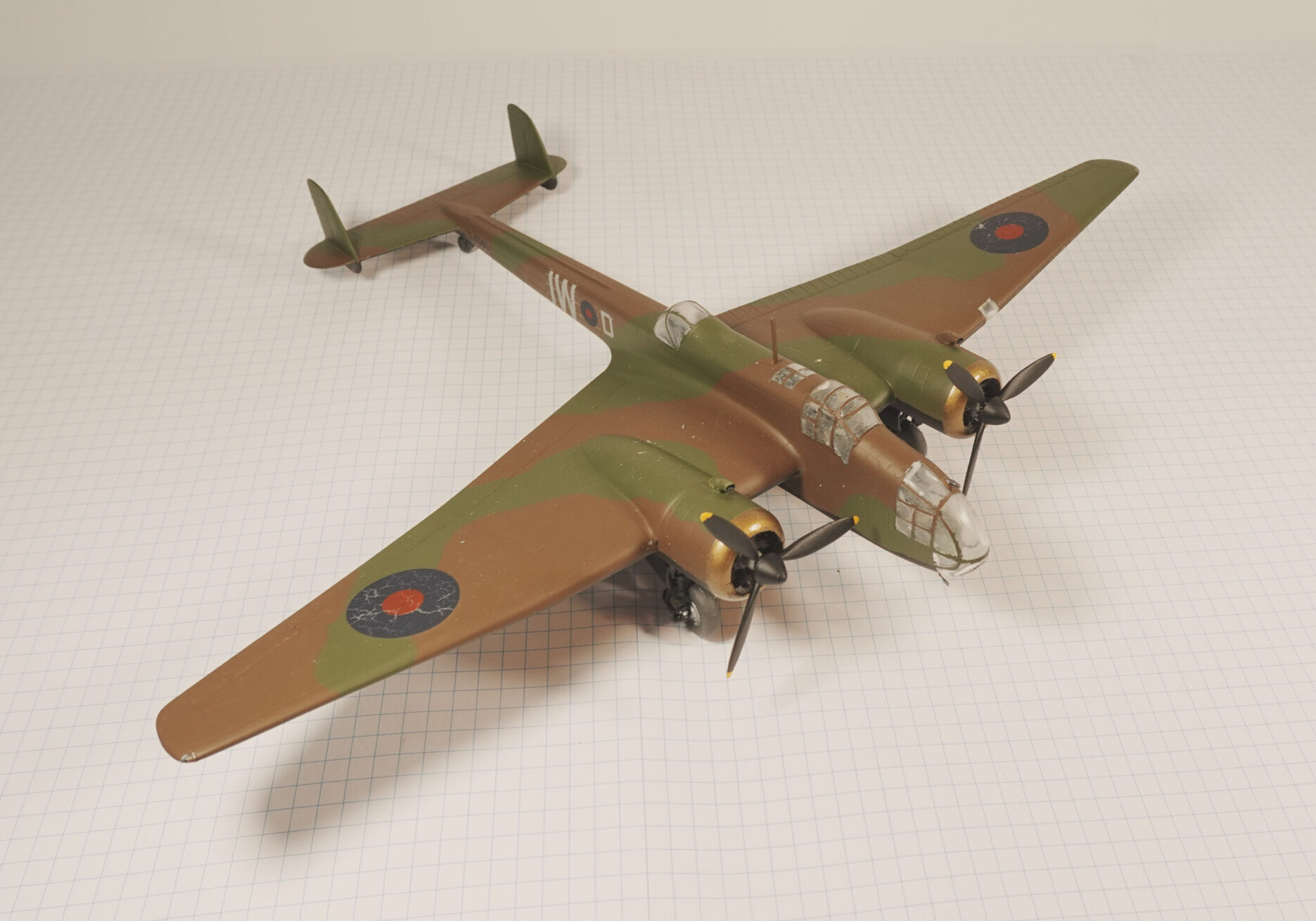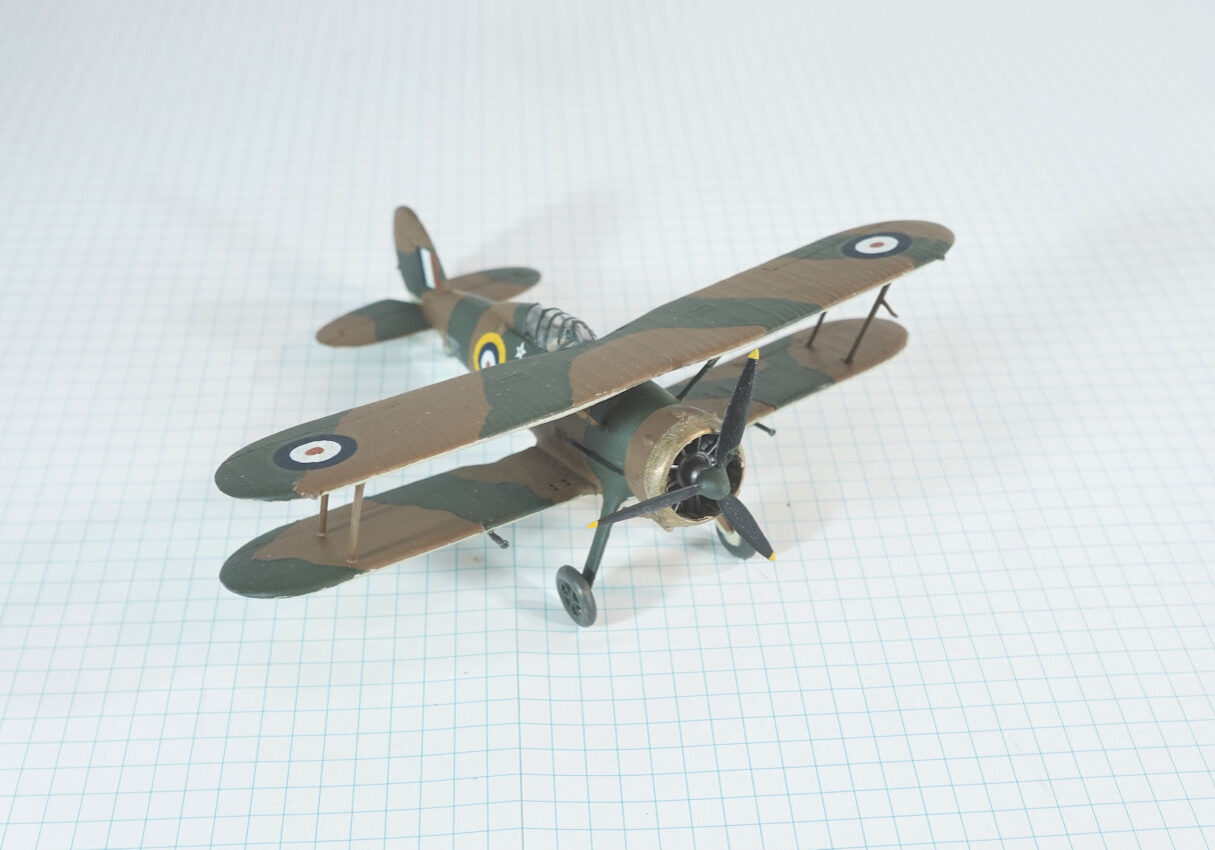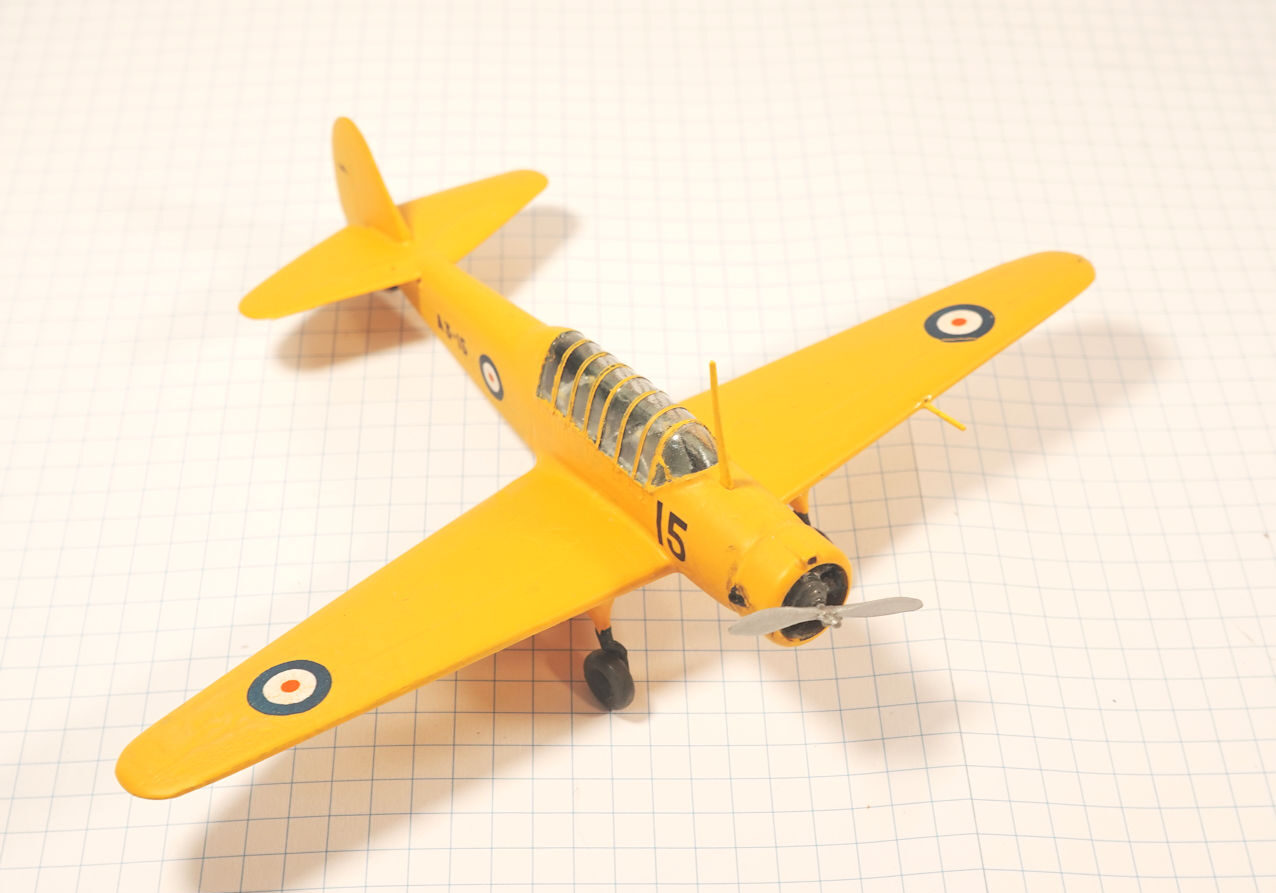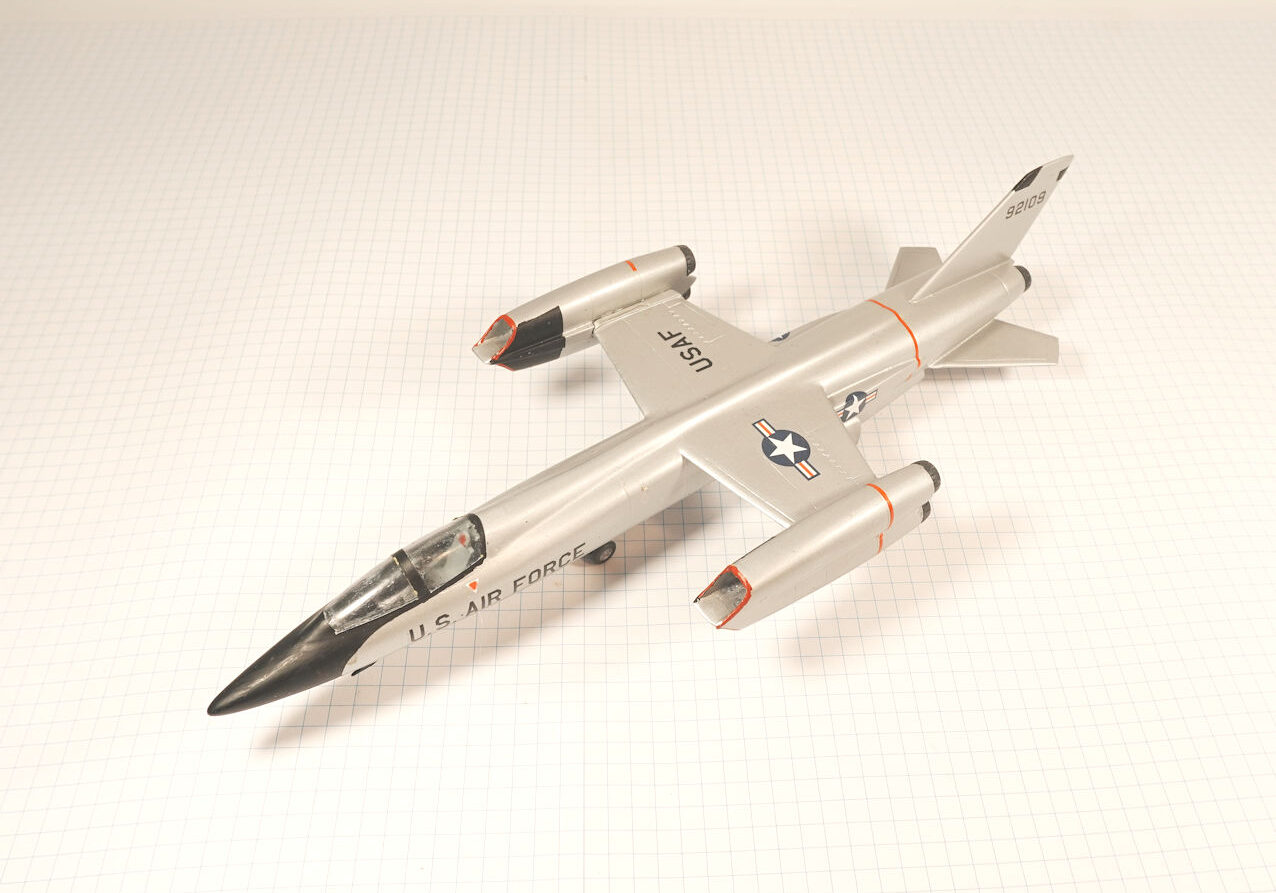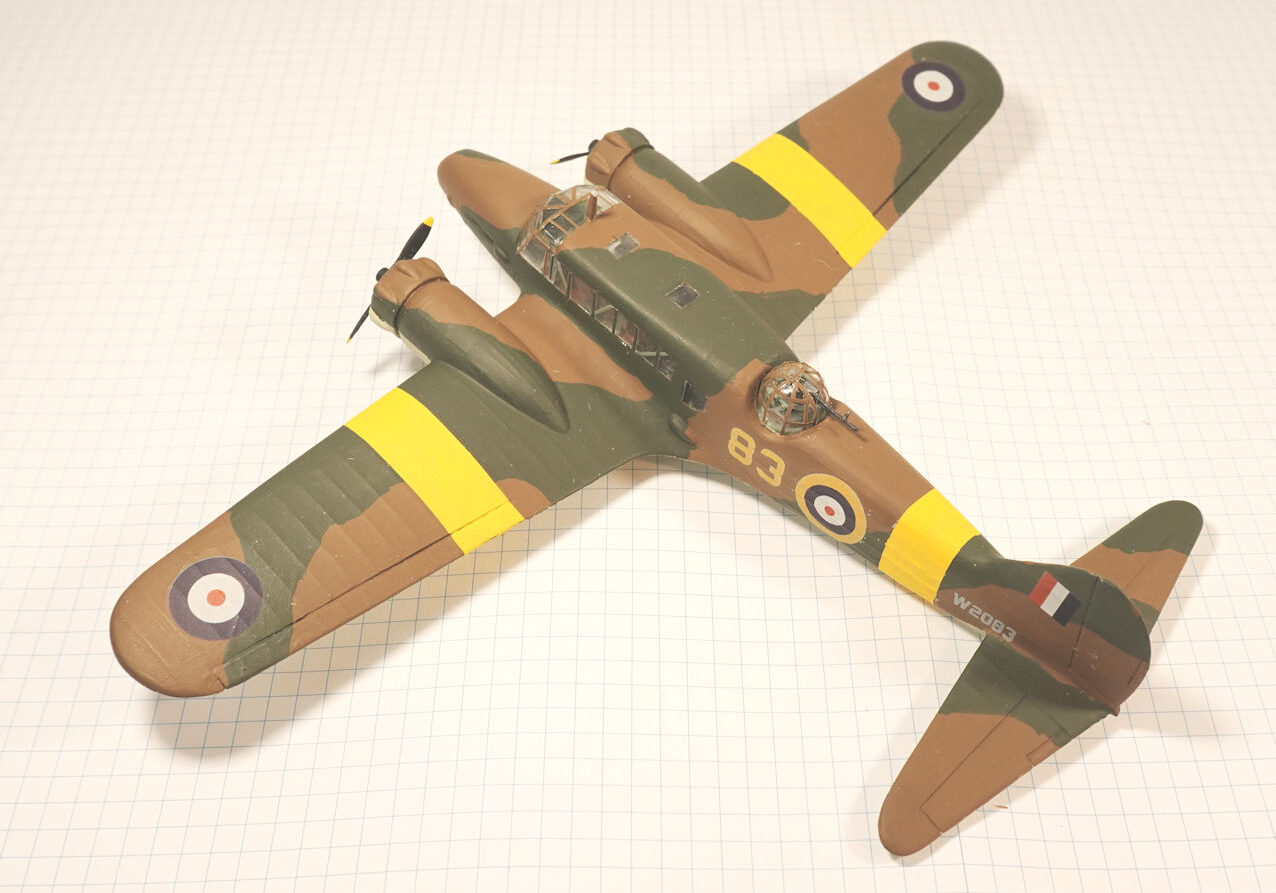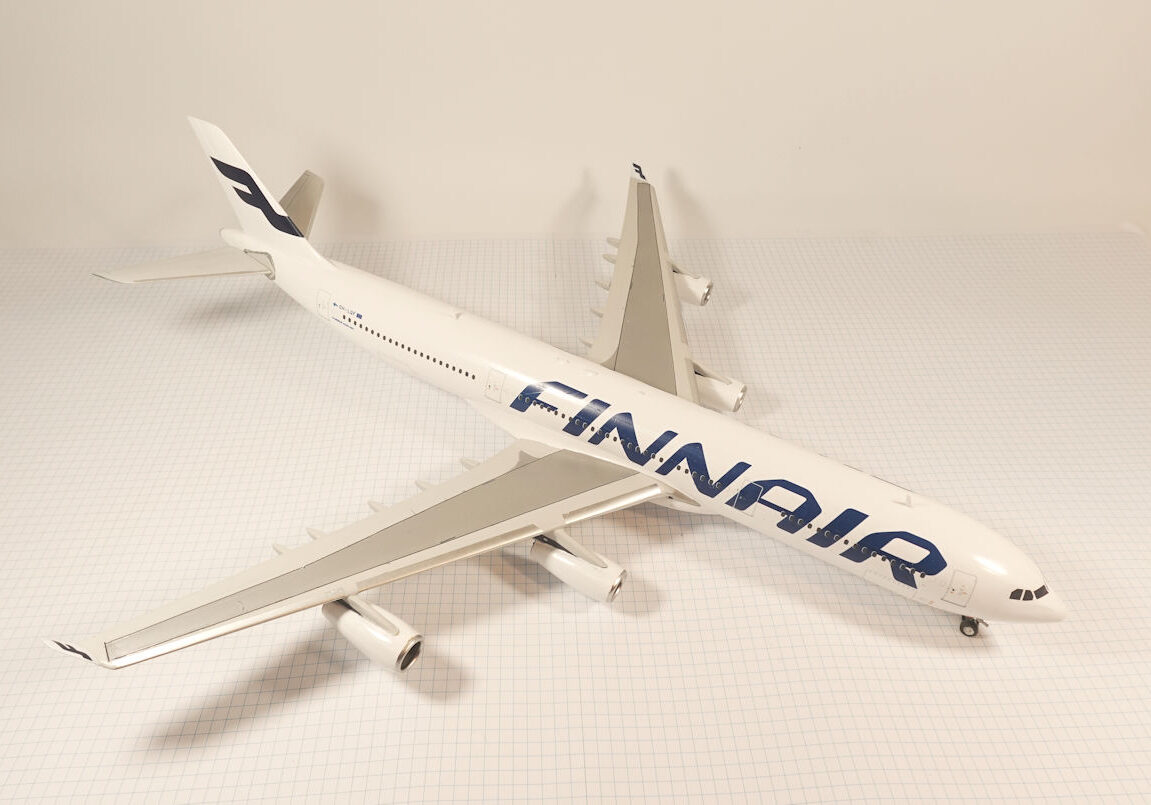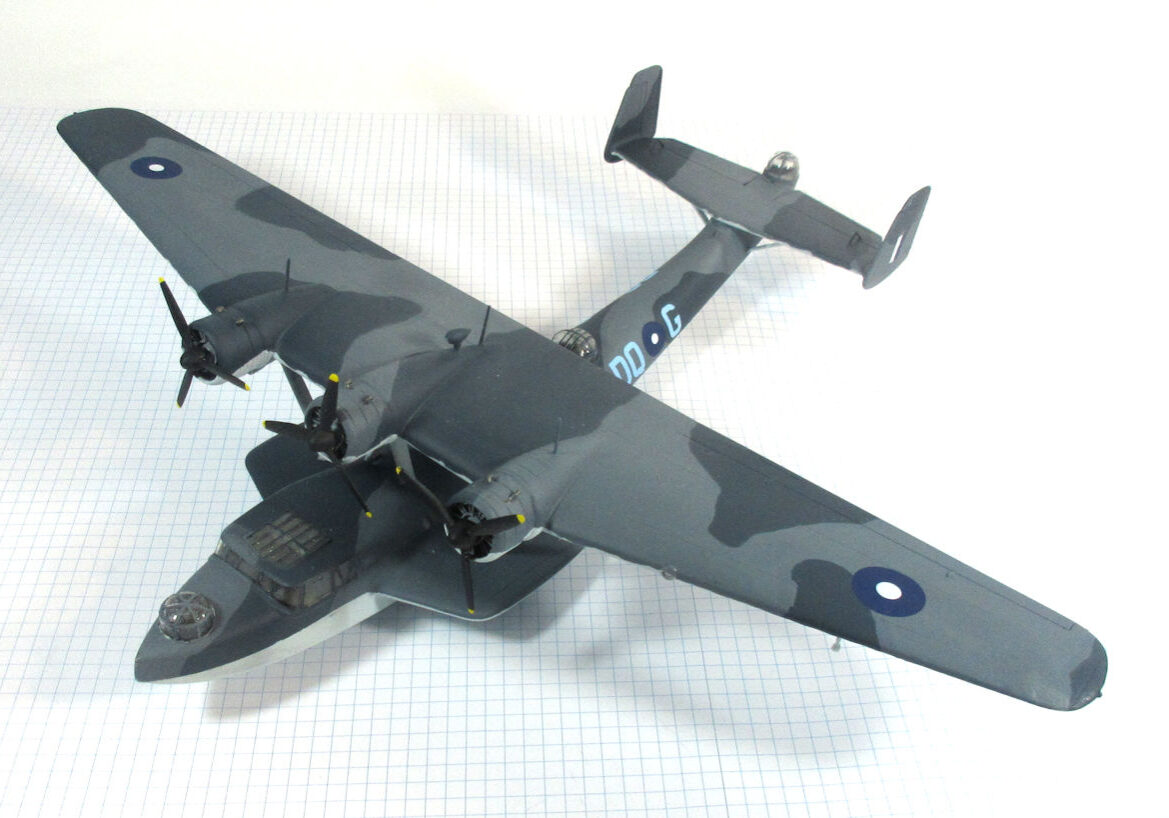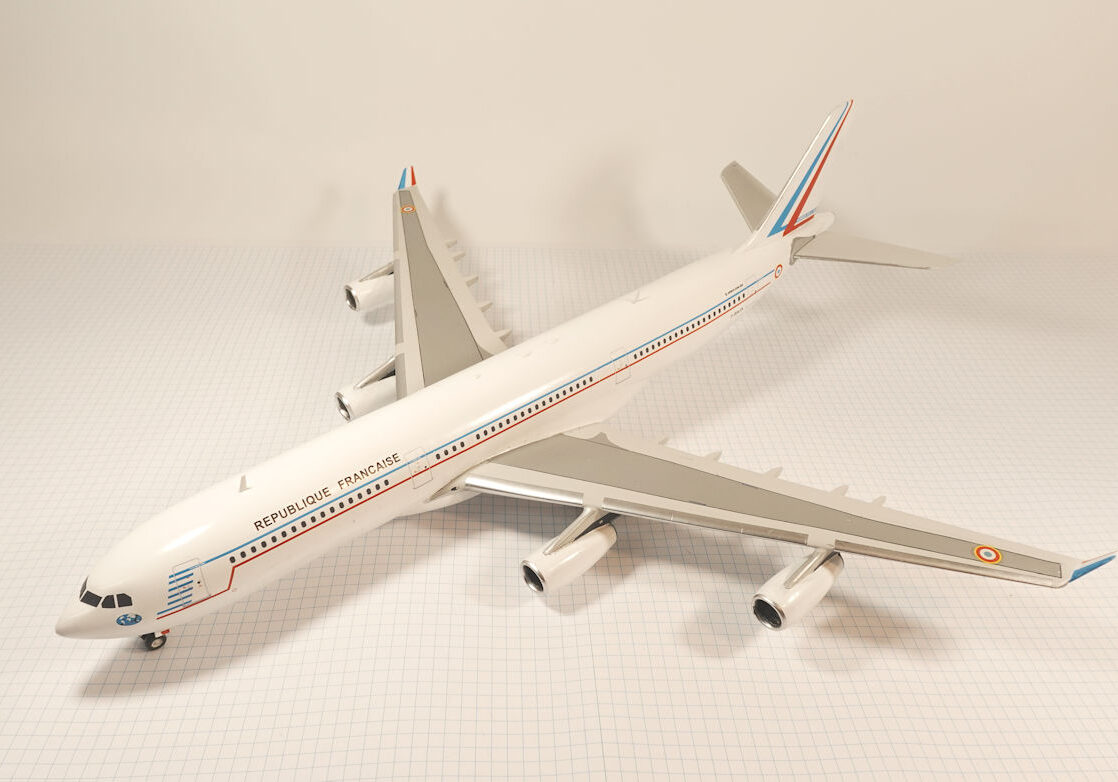History
The Bristol Bloodhound was a medium range surface to air missile developed in Britain to protect important targets from jet bombers.
A small number were deployed by the RAAF near Newcastle in the 1960s.
The threat presented by jet bombers armed with atomic bombs led to the development of surface-to-air missiles guided by radar immediately after World War II..
Development of the Bristol Bloodhound began in 1947 and, unlike many missiles that were powered by rocket motors, the Bloodhound was powered by two ramjet engines and launched by rocket boosters.
During the test program a number of Bloodhounds were test fired at Woomera in Australia.
The first Bloodhounds were deployed in Britain in 1958 to defend bomber bases and were finally stood down 1991.
Bloodhounds were also deployed in Switzerland, Sweden and in Australia
This model represents a Bloodhound 1 in service with 30 Squadron, RAAF, c.1965.
Airfix 1/72 kit completed by Leigh Edmonds in January 2006.
